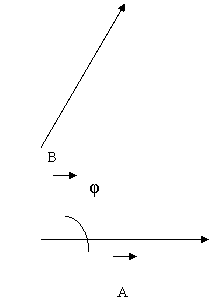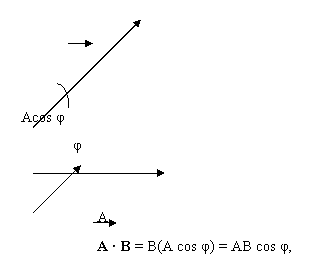Math Assignment Help With Multiplication Of Vectors
2.7 Multiplication of Vectors
2.7.1 Multiplication by Scalar: Let a be a vector quantity and ά be a scalar quantity. Then,
b = ά a
is a vector quantity having direction parallel to a and its magnitude is given by;

|b| = ά |a|
A unit vector n parallel to a is given by;
--
|a|
2.7.1.1 Product of vector and scalar in Cartesian components:<
a = axi + ayj + azk
similarly,
b = bxi + byj + bzk
and we have,
b = ά a
therefore,
bxi + byj + bzk = ά (axi + ayj + azk) = ά axi + ά ayj + ά azk
hence,
bx = ά ax by = ά ay ; bz = ά az
2.7.2 Vector products: Two other powerful methods that provide easy working with vectors are the dot (or inner) product and the cross product. The dot product produces a scalar and the cross product operates only on 3−dimensional vectors and produces another vector.
2.7.2.1 Dot Products: The scalar product of two vectors A and B is denoted by
A · B.
The scalar product is also called the dot product.
To define the scalar product A · B of two vectors A and B, draw the two vectors with their tails at the same point as shown in the figure below.
The angle between their directions is φ as shown; the angle φ always lies between 0° and 180°. (As usual, we use Greek letters for the angles.) The figure below shows the projection of vector B onto the direction of A;
This projection is the component of B parallel to A and is equal to B cos φ.
We define A · B to be the magnitude of A multiplied by the component of B parallel to A
A · B = AB cos φ = |A||B|cos φ
where φ ranges from 0° and 180°.
Alternatively, we can define A · B to be the magnitude of B multiplied by the component of A parallel to B,
which is the same as the previous equation above.
When φ is between 0° and 90°, the scalar product is positive.
When φ is between 90° and 180°, it is negative.
When φ = 90°, A · B = 0. The scalar product of two perpendicular vectors is always zero.
For any two vectors A and B,
AB cos φ = BA cos φ.
This means that
A · B = B · A.
The scalar product follows the commutative law of multiplication; the order of the two vectors does not matter.
The scalar product can also be expressed in terms of components as follows:
A · B = AxBx + AyBy + AzBz
The dot product is distributive:
a.(b + c) = a.b + a.cand commutative:
a.b = b.a
The angles between i, j, and k vectors is π/2 radians (90 degrees) and cos π /2 = 0, we can derive a handy alternative definition: Let,
u = ai + bj + ck
v = xi + yj + zk
then,
u.v = (ai + bj + ck).( xi + yj + zk)
=>u.v = (ai + bj + ck). xi + (ai + bj + ck).yj + (ai + bj + ck).zk
The angle between any nonzero vector and itself is 0, and cos 0 = 1, so i.i = 1 etc., Hence,
u.v = a x + b y + c z
This means that for any vector, a,
a. a = a2
Email Based Homework Help in Multiplication Of Vectors
To submit Multiplication Of Vectors assignment click here.
Following are some of the topics in Vectors in which we provide help:
Geometry Help | Calculus Help | Math Tutors | Algebra Tutor | Tutorial Algebra | Algebra Learn | Math Tutorial | Algebra Tutoring | Calculus Tutor | Precalculus Help | Geometry Tutor | Maths Tutor | Geometry Homework Help | Homework Tutor | Mathematics Tutor | Calculus Tutoring | Online Algebra Tutor | Geometry Tutoring | Online Algebra Tutoring | Algebra Tutors | Math Homework Helper | Calculus Homework Help | Online Tutoring | Calculus Tutors | Homework Tutoring




